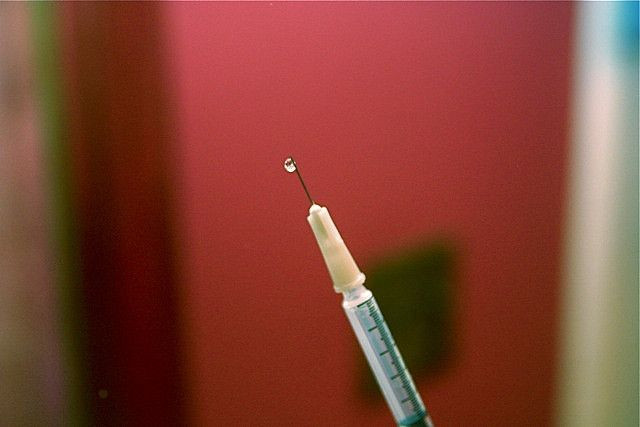New HPV Vaccine Prevents 90% Of Cervical Cancer, May Dethrone Gardasil

A new vaccine for the human papillomavirus (HPV) has been found to boost protection against cervical cancer by as much as 20 percent, according to a study published in the journal Cancer Epidemiology, Biomarkers & Prevention.
In 2006, the Food and Drug Administration (FDA) approved an HPV vaccine that covered, and continues to cover, four genotypes of the virus: 6, 11, 16, and 18. Sixteen and 18 are the two main cancer-causing types, 6 and 11 the genital warts-causing, although the vaccine, sold under the brand name Gardasil, protects against 70 percent of cervical and other HPV-related cancers in total. The new vaccine has been shown to protect against 90 percent.
In the world of vaccines, life spans seldom fall short of the 10-year mark. The vaccine currently in use for preventing yellow fever, for example, which goes by the name 17D, has been in commercial use since the 1950s. The Hepatitis A vaccine Havrix received FDA approval in 1995, and has been in use ever since. The chicken pox vaccine, Varivax, was introduced around the same time. It too has not changed.
HPV is different. Hepatitis A and chicken pox are ailments caused by lone viruses that infect without accomplice. HPV is, in fact, a collection of species — known as “valents” — that require people be protected in bulk. Gardasil protects against four valents. The new vaccine, also developed by Merck, protects against nine.
Nearly doubling the number of working valents offers more worldwide protection, says study author Elmar Joura, an associate professor of gynecology at the Medical University of Vienna in Austria. “The good thing is that the nine valent vaccine will equalize these differences,” Joura told Time. “The grade of protection will be the same worldwide.”
According to the Centers for Disease Control and Prevention, some 79 million Americans currently live with HPV. It’s so common, in fact, the CDC estimates nearly all sexually people will contract the virus at some point in their lives. Approximately 70 percent of all cervical cancer cases arise from a prior case of HPV.
In their study, Joura and his colleagues analyzed data from 12,514 women. They found 32 percent of women between the ages of 15 and 26 who had some form of pre-cancer had more than one type of HPV. Between the ages of 24 and 45, that rate was 19 percent. The new vaccine is currently under review by the FDA, and Joura suspects a verdict will be handed down by the end of 2014.
“The vaccine will hopefully be available soon after,” he said.
Contrary to some popular opinions, administration of the HPV vaccine does not promote sexual activity among teens and pre-teens. A study conducted in February discovered the fears were simply unfounded: Girls and women ages 13 to 21, when polled, did not begin having more sex or more unsafe sex after vaccination; nor did they believe protection was less important. The majority did not believe the vaccine protected against other STIs.
Experts recommend all girls and boys receive the HPV vaccine between ages 11 and 12, before they start engaging in sexual activity.
Source: Joura E, Ault K, Bosch F, et al. Attribution of 12 High-Risk Human Papillomavirus Genotypes to Infection and Cervical Disease. Cancer Epidemiology, Biomarkers & Prevention. 2014.
Published by Medicaldaily.com



























